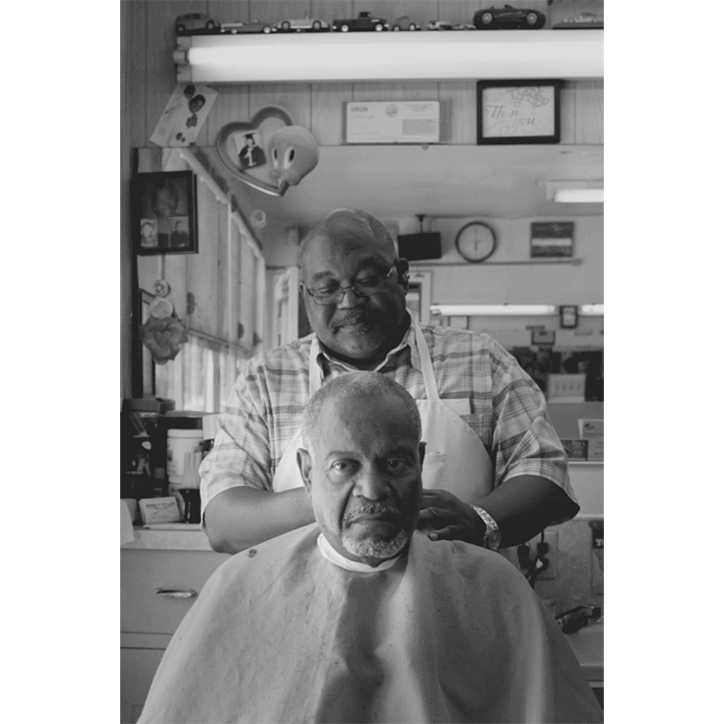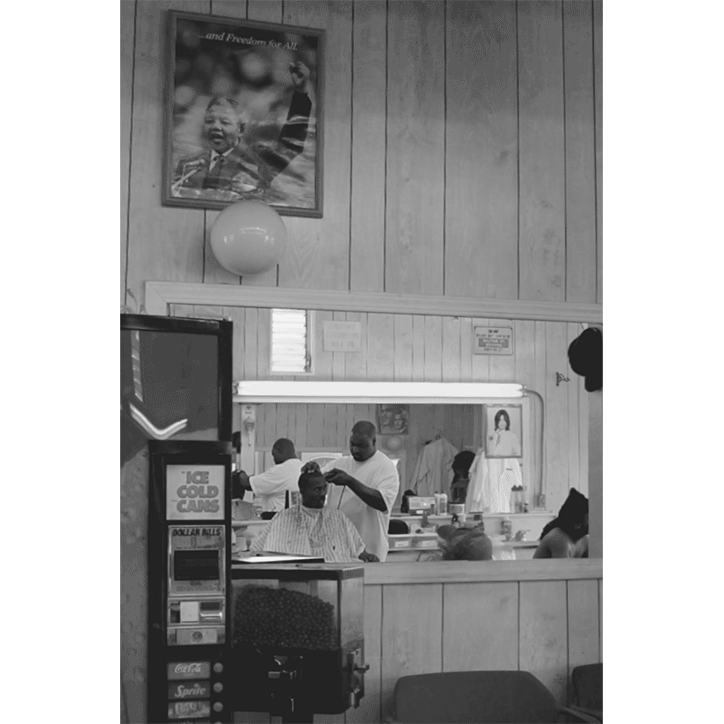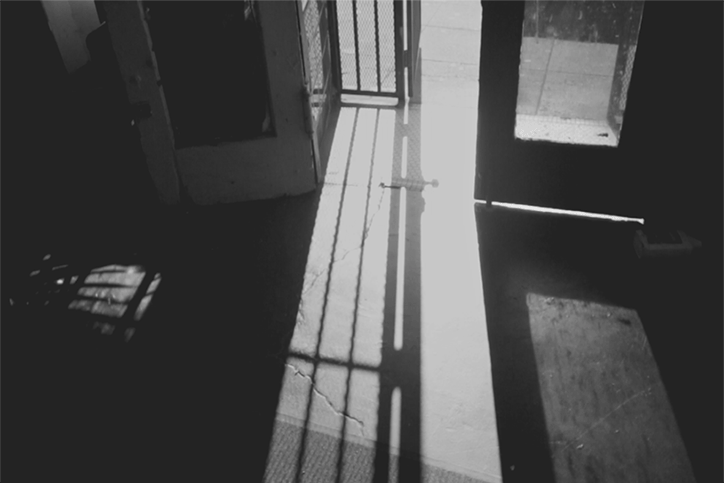Using GIFs to tell the story of Oakland’s black barbershops
The motion of a barber buzzing the nape of a man’s neck. The fluttering of a pair of scissors mid-haircut. These are the kinds of moments captured in the GIFs turned art and digital storytelling in the hands of Brandon Tauszik, a visual artist in Oakland, California who recently published a series of artful GIFs to document the city’s black barbershops and their barbers.
Tapered Throne, as he named the project, tells the story of Oakland’s black community through the lens of these barbers. It took four years to complete. Storybench caught up with Tauszik to discuss the photographs, his creative process, and why he chose to use GIFs as his creative medium.

How did you get the idea to use GIFs for Tapered Throne?
The GIF has enjoyed a pretty ferocious comeback in recent years and I feel that we’re seeing it evolve into a contemporary medium of communication online. I work with both filmmaking and photography as an artist, and the GIF format exists somewhere between the two mediums while incorporating some incredible aspects of both. For example, it contains the passing of time that exists in film but with the decisive moment aspect of a photograph. I just feel there’s so much to explore with that.
From the outset of Tapered Throne I was shooting entirely with video footage to be used as GIFs, it was never going to be just still images. In these barber shops there is a lot of idle time; the pace is slow, and motions are repetitive. They were ideal spaces for the medium. There was a lot of trial and error though and the project was made over the course of four years.

What do you shoot on? How do you light the shots?
I captured video footage on a DSLR camera using various prime lenses. Using a tripod allowed me to turn the camera vertically, while shooting at 60fps gave me the freedom to slow the footage down in post-production. I used only available light for these; I didn’t want to bring more attention to myself in these small shops than was necessary. Most of the spaces have soft fluorescent lights combined with large storefront windows, naturally giving the scenes nice and even-keeled lighting.
What programs do you use to make the GIFs? Any advice for looping these?
I worked in Adobe’s Creative Suite from start to finish, first by importing, sorting and slowing down the footage in Premiere. Then carefully finding moments that function well as seamless loops. After that, I use After Effects to mask out the static areas, crop and color grade. Then I import the clip into Photoshop where I set the timing of the frames and compress the image down to (ideally) around 2MB. The use of black and white is due to compression; the GIF can only hold up to 256 colors and colors can balloon the file size. I enjoy working within limitations like that.
What advice do you have for beginner photographers or photojournalism students looking for new ways to tell stories?
Read as much as you can and get to know the history of the medium. Then just be free and consider all the new tools that are being developed as potentially part of your easel. Exploit the web and think about how or where the work could function online, not just on a wall or in a book.
How are we as documentarians going to navigate this increasingly digital world?
Making visual content as a whole has been made more democratic and accessible, and that is great overall. It’s allowed for an unprecedented interest in photography and films, particularly human interest work. We do need to keep a critical eye amidst this sea of new images and image makers. I think genuine talent will always be achieved through due diligence and will shine through the rest.
Finally, how do you describe yourself?
I work with both filmmaking and photography on the regular, so I suppose I can be defined as a “visual artist.” I co-founded the video production company Sprinkle Lab, where I get to develop creatively within that medium. Then I’m creating personal work with photography in tandem, flip flopping my time between the two.







